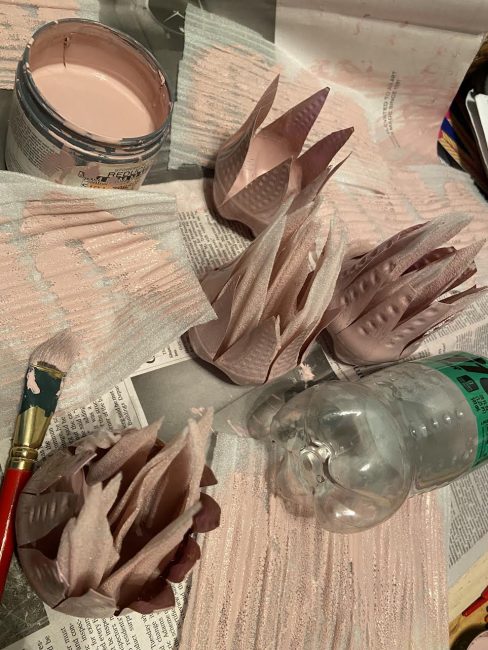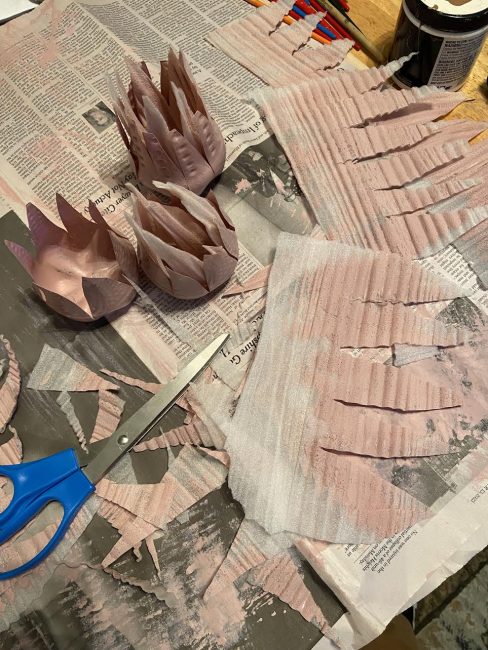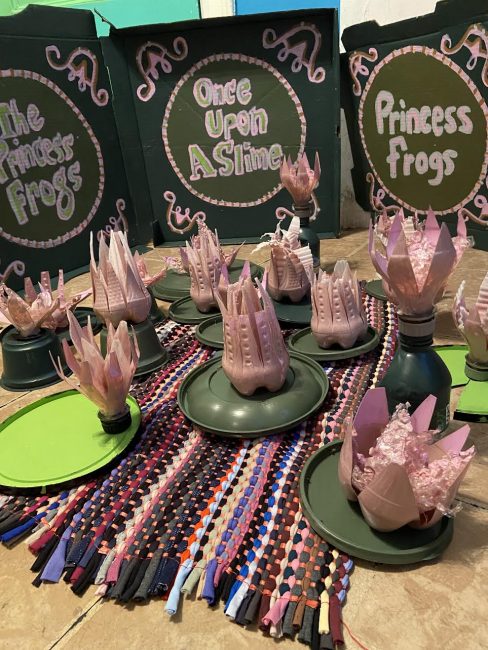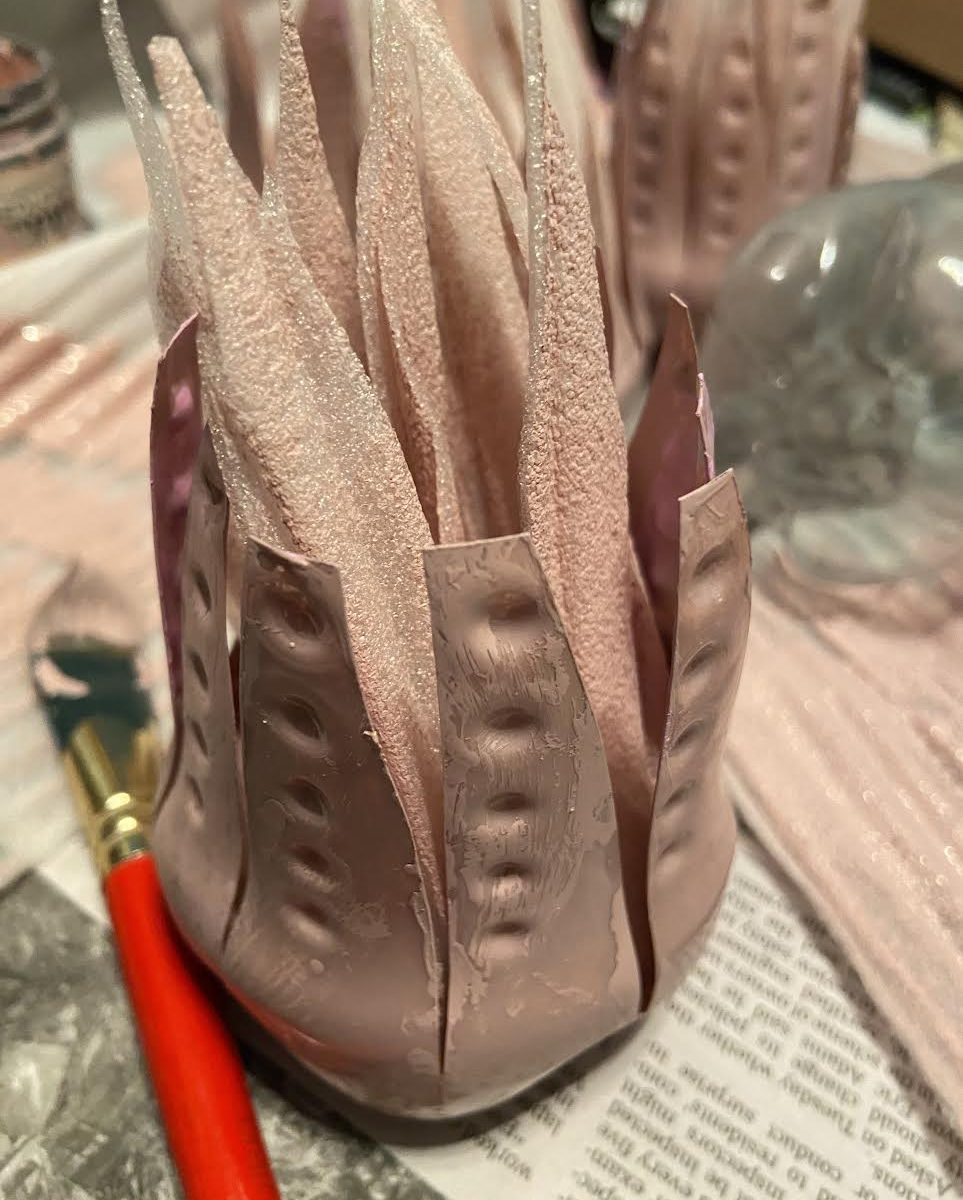I’m temporarily obsessed with creating a lily pond made from single-use plastics for my upcoming Princess Frogs Halloween display on West 69th Street (between Columbus and Central Park West).

I used an assortment of single-use plastics, including Sprite and Seltzer water bottles, yogurt containers, coffee cans, Chinese takeout lids, bubble wrap, and thin packing foam.
Single-use plastics are goods made primarily from fossil fuel–based chemicals (petrochemicals) and are meant to be disposed of immediately after use. Plastic pollution is very real, and single-use plastics are small but have a significant impact.

According to EarthDay.Org, Americans purchase about 50 billion water bottles annually, averaging about 13 bottles per person in the U.S.! That means using a reusable water bottle could save an average of 156 plastic bottles annually.
At least 14 million tons of plastic end up in our oceans every year, according to EarthDay.Org.

Single-use plastics can pose several health risks and contain chemical additives that act as endocrine disruptors. These additives mimic hormones and disrupt the body’s signaling, leading to a range of health issues, including hormonal imbalances, reproductive problems, and cancer.
If you’re thinking about getting crafty, check out YouTube. There are so many wonderful instructional videos. I enjoy watching the Ultimate Paper Mache channel with Joanie. My only wish is that she would occasionally switch up the hoodie for a twin set.
To create my lotus flowers, I watched a craft video on YouTube on how to make Lotus Flowers, but it was beyond my skill set, so I turned it off and went to work.
I ripped off the labels on the Sprite and Seltzer bottles. I cut the bottles in half and then cut flower shapes on the circumference of each half. The final step was painting the inside with a dusty rose before adding hot pink highlights.

My friend Lauren gave me some scraps of bubble wrap and thin packing foam. I cut the bubble wrap into 4-inch strips and painted both sides with dusty rose paint. I cut triangle shapes on one side of the strips and then tied them off before inserting them with glue into each plastic bottle.

There won’t be enough room in front of the townhouse on West 69th Street to host my display for these lovelies, but it doesn’t matter. I had a blast making them.
Many people have been wondering why I created Princess Frogs for Halloween. Last year, two women who saw my Dastardly Ducks display commented that they were grateful for a break from the gore and horror of the other street decorations, especially given the current violence in the world.
Secondly, there were so many girls dressed as princesses trick-or-treating that I wanted to celebrate them.

Everyone deserves to feel like a princess.






